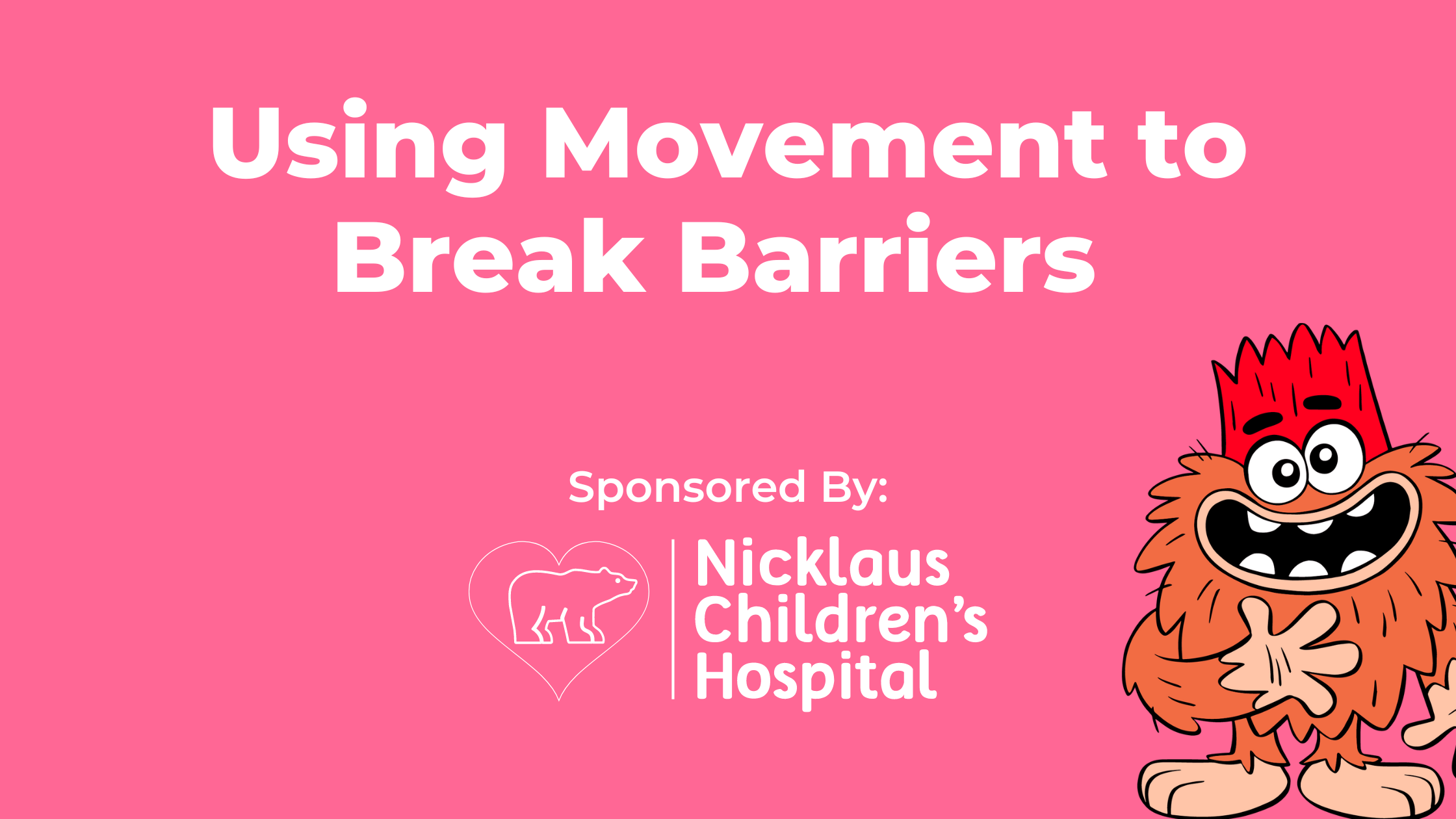Using Movement to Break Barriers
Discover how movement and brain boosts help students break invisible barriers that might otherwise keep them from making genuine connections with one another. Brought to you by Nicklaus Children’s Hospital ~ Julie Dossantos , Teacher

Participating with my students is not only fun, but also fosters our classroom family bond. I want my students to know that I see them, and through my participation, I acknowledge how important these movement opportunities are for us all.
Offering “Brain Breaks” throughout the daily class schedule was a hot topic when I was working on my undergraduate degree in early childhood education. These “brain breaks” were often designed to supply students with opportunities to take a break from the rigor of the classroom curriculum through movement. As adults, we know the value of stretch breaks or walks around the block during the work day. A few years ago, I heard another educator refer to these breaks as “brain boosts” and it really resonated with me. From then on out, I called these movement opportunities “brain boosts” versus “breaks” because movement provides students opportunities to re-energize, refocus, and to boost concentration.
In my classroom, I utilize brain boosts as a way to help us connect as a family and learn about each other and what we have in common, while celebrating what makes us all unique. What do brain boosts look like in my classroom? Well, the short answer is, they vary. We all know that each student is unique and learns in different ways, so why should brain boosts all be the same? In my classroom, I plan time throughout our day to provide students with movement choices that meet their individual needs. We start our day with what we refer to as our “morning meditation” where I invite students to engage in movement videos from GoNoodle’s Think About It, Flow, or Empower Tools channels. Students have the choice to participate on the classroom rug, in their seats, standing up, or they may choose to do another activity such as journal, draw, or read.
Offering quiet and gentle movement choices has proven to be a peaceful way to begin each day. I have witnessed firsthand how these early opportunities for movement can have a positive impact on a student's mindset. I also enjoy participating in our movement brain boosts with my class. Participating with my students is not only fun, but also fosters and reinforces our classroom family bond. I want my students to know that I see them and through my participation, I acknowledge how important these movement opportunities are for us all.
All students come from a variety of backgrounds, family types and family sizes which can feel overwhelming - especially at the beginning of the year. That’s why I turn to movement and brain boosts to help my students break invisible barriers that might otherwise keep them from making genuine connections with one another. With the help of cooperative and movement activities, whole brain movements, turn and talks, and other interactive experiences - establishing a culture in which we explore new content has been an equalizer that provides a space for my class to connect as one.
Providing movement activities throughout the day allows students to express themselves creatively as well as interact with their peers in a non-threatening way. Through these movement activities, students build their social skills, form relationships with their peers, and build knowledge, thus nurturing the classroom family atmosphere that we, as teachers, know is invaluable.
—--
Julie is a first-grade teacher by day and a vegetarian blogger at night! Julie has been teaching for 6 years in Florida and loves spending time with her family, running/walking, and reading in her spare time.” You can connect with Julie at on Twitter and Instagram: @TeachMrsDTeach
This blog was sponsored by GoNoodle’s partner, Nicklaus Children’s Hospital.
Founded in 1950 by Variety Clubs International, Nicklaus Children’s Hospital is South Florida’s only licensed specialty hospital exclusively for children, with approximately 800 attending physicians, including more than 500 pediatric subspecialists. The 309-bed hospital, known as Miami Children’s Hospital from 1983 through 2014, is renowned for excellence in all aspects of pediatric medicine with many specialty programs routinely ranked among the best in the nation by U.S. News & World Report since 2008. The hospital is also home to the largest pediatric teaching program in the southeastern United States and since 2003 has been designated an American Nurses Credentialing Center (ANCC) Magnet facility, the nursing profession’s most prestigious institutional honor. For more information, please visit www.nicklauschildrens.org

